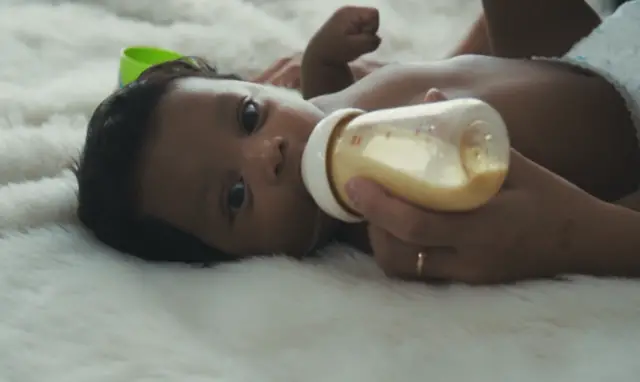Blessing is another word for “having a baby.” Sounds enchanting? But, Parenting is a never-ending grind involving problems and joy simultaneously, which seems quite weird sometimes, but overall it’s a great experience.
Being a mother, you have to look after everything directly or indirectly associated with your baby’s health, and most importantly, the diet. In the beginning, a baby’s well-being depends significantly on milk intake.
Several factors are connected with feeding milk, for instance, bottle type, bottle size, nipple’s material, nipple’s size, and so on.
If you’ve already found the best bottle to feed your baby, don’t switch it as long as your child is okay with it.
But, one element which needs your prior consideration is the nipple size! When Do You Switch to Size 2 Nipples? It is the most central-attention question because irregular feeding directly affects infants’ health.
The nipple sizes determine the milk flow rate; for instance, the larger nipple size means increased milk flow and vice versa.
Mothers are often referred to consider the smallest hole at the start and stick to the extent accepted by their children.
In my opinion, this is not it! The nipple switching depends on several other factors like age, requirements, digestion, and more. I’ll share all necessary details over this concerning topic in this blog, based on my parenting experiences.
When Do You Switch to Size 2 Nipples?

Before switching, you need to know the three types of nipples based on the milk flow: slow, medium, and fast. The slow nipples are the smallest, with a tiny hole that allows a very minimal amount of milk into the baby’s mouth.
Similarly, the medium nipples come with a larger opening size, allowing a smoother milk flow. Lastly, the fast nipples are the ones that have the largest hole, allowing infants to consume more milk in less time because of increased flow rate.
Coming to the question, people often think age is the only primary factor that determines when to switch a nipple size, which is true somehow.
Studies revealed that the right time to switch to size nipples is when your baby is three months older, but that’s not too elementary. There are some other determinants too, which affect your decision of switching nipple size. So, let’s clear those facts!
Affecting Factors or Signs

You can find out the answer to this question by noticing “How your baby sucks the milk from the bottle’s nipple.” For instance, “Sucking speed” can tell the need for switching nipples.
If your baby sucks at an average pace, there is no need to worry, but what if the baby starts sucking the nipple hard?
Secondly, if your child is flattening or destroying the nipple, it means there is something wrong. You have to figure it out by observing and trying out the possible substitutes. For example, change the bottle, change the nipple or switch the nipple size.
Feeding time is another primary determinant, such as if a baby is taking longer than usual to complete feedings like half-hour or more, it means nipple size is smaller.
You need to increase the nipple size. Toddlers’ intake is less at feeding time but becoming hungry soon is also a considerable determinant.
Besides that, some behavioral changes also show that your toddler is not happy with feeding products, like kicking the bottle away, squirming it, or smacking at it. Some babies also start crying while feeding or leave the bottle unfinished too. In all such cases, you need to upgrade the nipple size.
However, if your child is not mainly showing any of those signs and complete feeding in a healthier way, there is no need to upgrade the nipple’s size. In my opinion, you should not switch to size two nipples just because your baby is three months older. Please make the decision wisely!
FAQs

At What Age Do You Use Level 2 Nipples?
When a baby gets three months older, it is suggested to switch to Level two nipples. However, in my opinion, a mother has to look after several other factors too.
Can Slow Flow Nipples Cause Gas?
Slow nipples have tiny holes, allowing very minimal milk flow to the baby’s mouth. It means feeding with slow flow nipples is typically sluggish compared to the medium or fast nipples. Sometimes, these slow nipples pump air to the baby’s mouth, which sooner or later becomes a cause of gas.
Can Switching Formulas Hurt My Baby?
No! Changing brands won’t harm the baby; however, your child might react differently because of taste. But check out the doctor before trying new formulas as sensitivity is real. I encourage you to switch brands to develop diverse taste buds or flavors in your baby.
Conclusion
Switching nipple size is a vital decision as it is directly associated with your baby’s health. None of us can afford a single mistake for our children; you can call it pure love. So, please check out as many details as possible to make the right decision. I hope that your baby grows up in good health and nourishment.
Happy Mothering!









